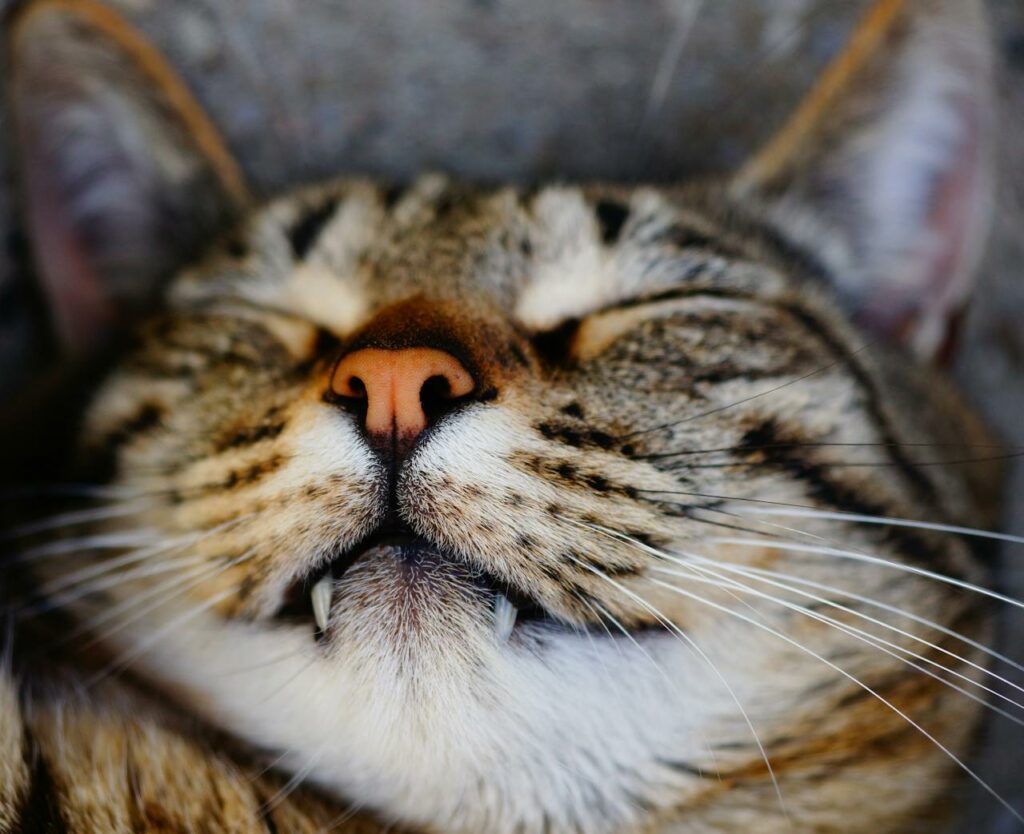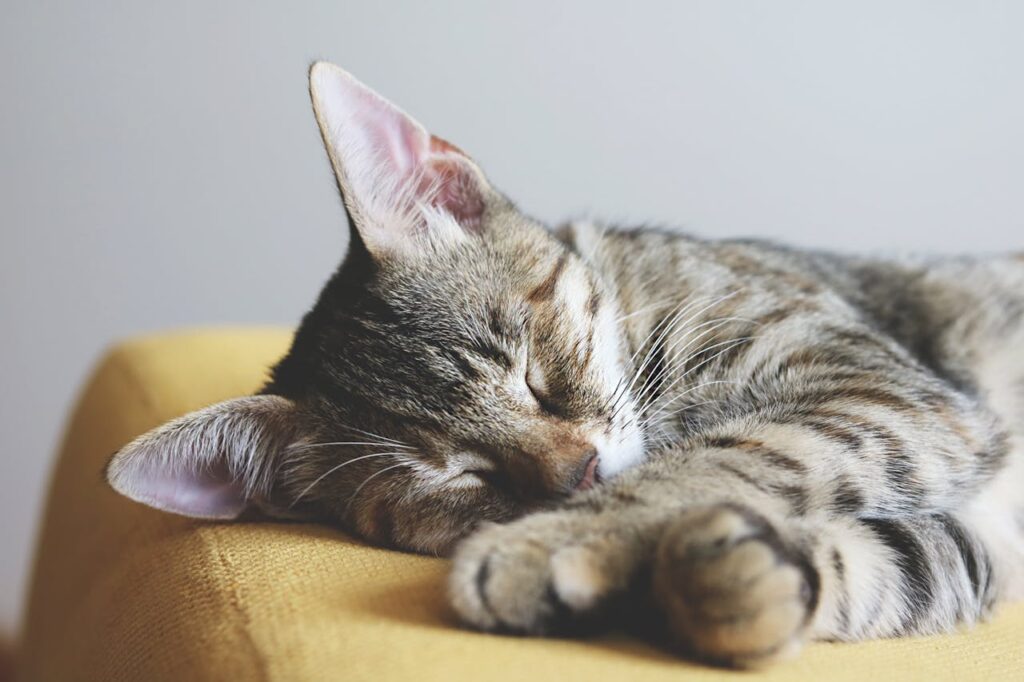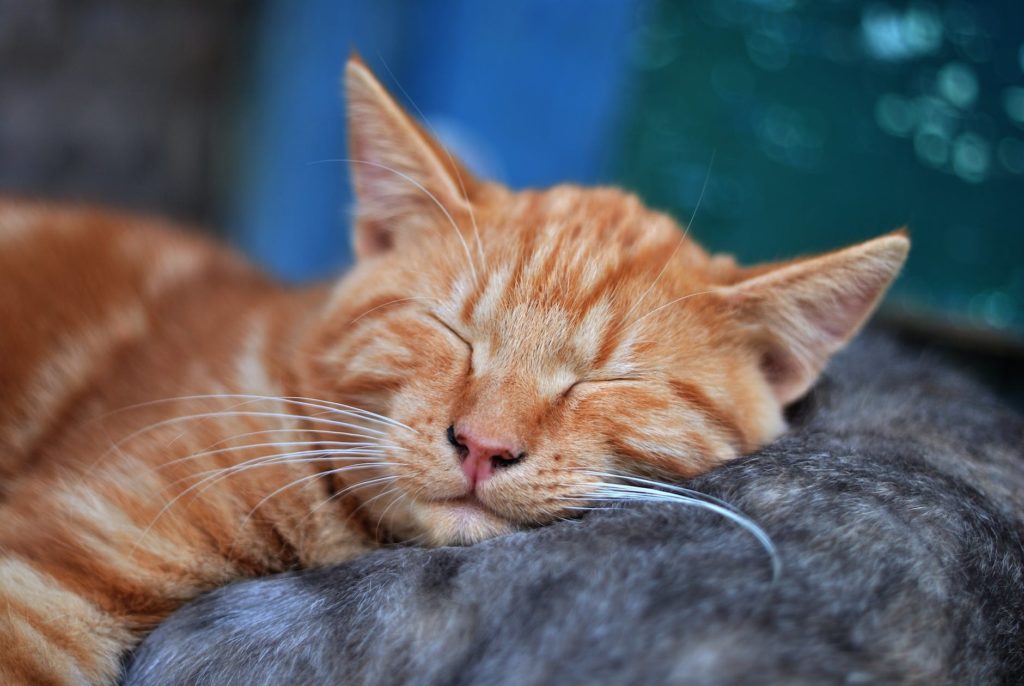Secrets to Cat Sleep
Cats are known for their love of sleep. In fact, cats can sleep for up to 16 hours a day, which is twice as much as the average adult human. As cat owners, it is important to understand the sleeping habits of your furry friend in order to ensure their health and well-being. In this article, we will cover everything you need to know about cat sleep.
Table of Contents
The Ultimate Guide to Feline Slumber: 10 Crucial Secrets to Cat Sleep Every Owner Needs to Know
As a devoted cat owner, you may have noticed that your furry friends have an extraordinary affinity for sleep. Cats are notorious for snoozing through the day, often leaving us pondering the mysteries of their dream-filled minds. What exactly influences their unique sleeping habits? In this guide, we will unveil ten crucial secrets to cat sleep every owner needs to know. By understanding these aspects, you can create a harmonious sleep environment that promotes your cat’s health and happiness.
1. The Nature of Feline Sleep: Understanding REM and More
Before delving into the specifics of how to enhance your cat’s sleep quality, it is essential to understand the nature of feline sleep. Secrets to Cat Sleep. Cats experience several stages of sleep, including both REM (rapid eye movement) and non-REM sleep. During REM sleep, cats can dream – a fascinating aspect of their sleep behavior that relates to their hunting instincts. In this active sleep phase, you may observe your cat twitching or moving its paws, which are indicators of dreaming akin to how humans experience dreams.
Interestingly, a cat spends approximately 16 hours a day sleeping, although this varies depending on its age, breed, and health. Kittens and elderly cats tend to sleep more, sometimes reaching up to 20 hours a day, while younger, active cats may have a more erratic sleep schedule characterized by bursts of energy followed by long periods of rest. Secrets to Cat Sleep. Understanding these basic concepts helps owners appreciate their pet’s frequent naps and sometimes unusual sleeping positions, such as curling up tightly or sprawling out in a sunbeam.
Furthermore, providing a comfortable and secure sleeping environment can enhance the quality of your cat’s sleep, allowing them to rejuvenate effectively and maintain their playful and curious nature.
2. Ideal Sleep Environment: The Importance of Comfort
Cats are highly sensitive to their surroundings, making the sleep environment crucial to their sleep quality. To create the perfect sanctuary for your feline friend, consider aspects like bedding, temperature, and light. Cozy, soft bedding made of warm materials can entice your cat to settle down peacefully. Secrets to Cat Sleep. Fabrics such as fleece or plush can provide that extra layer of comfort, inviting your pet to curl up and enjoy long, uninterrupted naps.
Moreover, cats prefer a darker space when sleeping. Hence, positioning their bed or cat tree in a dimly lit area can enhance their overall comfort. Secrets to Cat Sleep. This preference stems from their natural instincts, as they feel safer and more secure in shadowy surroundings. Additionally, they thrive in a moderately warm environment; therefore, ensure the room temperature doesn’t drop too low at night, as this could interrupt their slumber.
Providing access to locations like sun-warmed spots during the day can also realistically mimic a cat’s natural behavior and encourage restful sleep. Secrets to Cat Sleep. Consider the layout of your home, such as placing a bed near a window for warmth and observation, as this can enhance their sense of security while highlighting their need for comfort in their sleep environment.
3. The Role of Routine: Establishing a Sleep Schedule
Cats, although seemingly independent, thrive on routines. Establishing a consistent daily schedule can significantly influence your cat’s sleep quality. As crepuscular creatures, cats are naturally most active during dawn and dusk, which aligns with their instincts for hunting and exploring. By planning playtime and feeding sessions around these peak activity periods, you can cater to their natural behaviors. Secrets to Cat Sleep. Engaging in interactive play before their designated sleep hours allows them to expend energy, making them more likely to settle down for a restful night’s sleep.
Additionally, creating a quiet and peaceful atmosphere during their sleep hours is crucial. Reducing noise, limiting sudden movements, and avoiding disturbances can help your cat enjoy uninterrupted rest. It’s also beneficial to provide a comfortable sleeping space, such as a soft bed in a cozy corner, where they feel safe and secure. By being mindful of their sleeping patterns and adjusting your schedules accordingly, you will foster a more relaxed environment. Secrets to Cat Sleep. Over time, your cat will learn to associate specific times with rest, helping to instill a sense of security. Ultimately, a well-established routine supports not just better sleep, but also overall health and well-being for your feline companion.
4. Choosing the Right Sleeping Spot: A Matter of Preference
Cats are known for their unique sleeping preferences. They often seek out high spots or secluded corners for snoozing because such locations provide them a sense of safety and observation. Secrets to Cat Sleep. Be attentive to where your cat prefers to sleep – it might be a sunny windowsill, a cozy corner draped with a soft blanket, or even curled up in your lap. Each choice reflects their desire for comfort and security.
Providing multiple options for comfortable sleeping spaces can make a significant difference in your cat’s well-being. Cat trees with elevated perches, soft blankets on accessible shelves, and cozy beds placed in quiet areas will allow your feline friend to choose a spot that feels secure. Secrets to Cat Sleep. Cats are instinctually inclined to find safe hideaways where they can both rest and keep an eye on their surroundings. By offering a variety of sleeping options, you honor their natural instincts, enhance their happiness, and improve their overall sleep quality.
Additionally, consider creating a serene environment that minimizes disturbances. Using gentle lighting and maintaining a quiet atmosphere can encourage deeper rest, making your cat feel more at home. With thoughtful attention to their sleeping preferences, you can foster a peaceful haven for your beloved feline companion.
5. Psychological Factors: Stress and Anxiety Impact on Sleep
Cats are creatures of habit, and any changes in their environment can lead to stress or anxiety, significantly impacting their sleep quality. Factors such as moving to a new home, introducing new pets, or shifts in household dynamics can contribute to sleep disturbances. Secrets to Cat Sleep. Cats thrive on routine, so any disruption in their daily life can provoke feelings of insecurity and unease, making it more difficult for them to settle down and enjoy restorative sleep.
To alleviate stress, it’s essential to maintain a consistent and stable environment for your feline friend. This includes keeping their feeding times regular and minimizing sudden changes to their surroundings. Providing safe hiding spots can greatly foster a sense of security, allowing them to retreat when feeling overwhelmed by external stimuli.
Additionally, consider using calming pheromone diffusers or natural supplements specifically designed to reduce anxiety, which can promote a more peaceful state of mind conducive to sleep. Engaging in regular playtime can also help to dissipate excess energy and ease anxiety, contributing to improved sleep patterns. Secrets to Cat Sleep. By addressing these psychological factors, you can ensure your cat experiences more restful sleep, leading to a healthier and happier life.
6. Nutrition and Sleep: The Connection You Didn’t Know
What your cat eats can significantly impact their sleep patterns in various ways. A well-balanced diet rich in essential nutrients not only promotes overall health but also enhances sleep quality. Cats require a mix of proteins, fats, vitamins, and minerals to support their energy levels, immune function, and overall well-being. Secrets to Cat Sleep. For instance, essential fatty acids, such as omega-3, can contribute to a healthier coat and skin, while high-quality protein sources support muscle development and energy stamina.
Furthermore, timed feeding schedules play a crucial role in a cat’s sleep quality. Try to feed your cat in the evening, allowing them to settle down after a satisfying meal. Secrets to Cat Sleep. Cats often feel drowsy after eating, and this simple adjustment can encourage them to curl up and enjoy a good night’s sleep. Keep portions appropriate, as overeating can lead to discomfort and disturb their rest. Additionally, creating a calm environment during mealtime can minimize stress and enhance relaxation. Always consult your veterinarian for recommendations tailored to your cat’s specific nutritional needs, ensuring they receive the best care for their health and sleep.
7. Playtime and Exercise: A Sleep Catalyst
Cats are natural hunters, and their instinctual need to roam and play significantly influences their sleep patterns. Engaging your cat in regular play sessions stimulates both their body and mind, helping to release pent-up energy. Secrets to Cat Sleep. Consequently, a well-exercised cat is more likely to experience restorative sleep, allowing them to awaken refreshed and ready for another day of exploration and activity.
Incorporating interactive toys, laser pointers, or feather wands into your daily routine can keep your cat active and engaged. These toys not only provide physical stimulation but also stimulate your cat’s hunting instincts, which is essential for their mental well-being. Secrets to Cat Sleep. Aim for at least 30 minutes of play each day, especially during the evening hours when your cat’s natural hunting behavior tends to emerge. This strategy ensures that your cat meets their physical needs while promoting deeper, more restorative sleep.
Additionally, keeping a consistent schedule helps your cat develop a routine that maximizes their energy expenditure and sleep patterns. Secrets to Cat Sleep. By dedicating time each day for interactive play, you not only strengthen the bond with your feline friend but also contribute to their overall health and happiness, leading to a more peaceful night’s rest.
8. Health Issues: Recognizing Signs of Sleep Disturbance
As a responsible cat owner, being attentive to your pet’s health is crucial. If you notice changes in your cat’s sleep patterns, it may indicate underlying health issues. Excessive sleepiness, unusual vocalizations, or difficulty falling asleep can point to health problems ranging from obesity to arthritis or even anxiety disorders.
Regular vet visits are essential for monitoring your cat’s health and evaluating any changes in their behavior. If you suspect a health issue is affecting your cat’s sleep, consult with a veterinarian for advice and a possible treatment plan. Secrets to Cat Sleep. Remember, ensuring good health often means a happier, more restful sleep for your feline companion.
9. Temperature Regulation: Keeping Your Cat Cool or Warm
Cats are particularly sensitive to temperature changes, and a comfortable sleeping environment must cater to their thermal preferences. In warmer months, ensure plenty of ventilation and shade to prevent overheating. Secrets to Cat Sleep. Offering cooling mats or specialized pet pads can provide much-needed relief during hot days, allowing your cat to relax without overheating. Additionally, keeping blinds drawn during the hottest part of the day can help maintain a cooler indoor temperature. It’s also important to provide fresh, cool water to keep them hydrated.
Conversely, during colder months, ensure that your cat has a warm, snug place to sleep. Heated beds, blankets, or even hot water bottles wrapped in a towel can help maintain their body temperature. Cats often seek out warmth, so placing their bed in a sunlit area during the daytime can also be beneficial. Secrets to Cat Sleep. Always observe your cat’s behavior—if they are curling up tightly or seeking out warm spots, it’s a clear sign they may need more warmth. By adjusting your home environment according to seasonal changes, you promote optimal sleep conditions that cater to your cat’s needs, enhancing their overall comfort and well-being.
10. Personal Touch: The Importance of Bonding
Lastly, fostering a strong bond with your cat can significantly impact their sleep quality, as emotional security is instrumental in achieving relaxation. Secrets to Cat Sleep. Spending quality time with your cat through petting, cuddling, or simply sitting nearby while they nap can make a world of difference. These gentle interactions not only strengthen your relationship but also create a serene atmosphere that encourages deeper, more restorative slumber.
Cats thrive on routine and familiarity, so engaging in regular bonding activities can enhance their sense of security. Secrets to Cat Sleep. Consider establishing a calming pre-sleep ritual, such as softly brushing their fur or playing soothing music, to help signal that it’s time to relax.
Moreover, avoid disrupting your cat’s sleep with excessive noise or sudden movements. Respecting their sleep boundaries cultivates trust, which can positively affect their comfort levels during rest. Creating a peaceful environment—free from disturbances like loud sounds or erratic behavior—allows your cat to feel safe and cared for. Secrets to Cat Sleep. As a result, you create an environment where your cat feels loved and secure, leading to more restful nights. In nurturing this bond, you not only promote better sleep for your pet but also enrich your relationship with them.

Additional
Prioritize Your Cat’s Sleep
In conclusion, understanding the crucial secrets to cat sleep every owner needs to know can significantly enhance your cat’s quality of life. From creating a comfortable sleep environment to recognizing the influence of diet and exercise, every aspect plays a vital role in your cat’s overall well-being. By incorporating these strategies, you’ll ensure your furry friend enjoys peaceful, restorative sleep, leading to a healthier and happier life.
By following these tips, not only do you support your cat’s natural sleeping patterns, but you also strengthen the bond you share. As you deepen your understanding of feline sleep, you become an even better guardian for your beloved companion, providing them with the nurturing environment they deserve.
The Science of Cat Sleep
Cats are crepuscular animals, which means they are most active during dawn and dusk. This is because their ancestors were nocturnal hunters, and they have retained some of those traits. Secrets to Cat Sleep. As a result, cats sleep for most of the day and are active during the night.
Cats have two types of sleep: deep sleep and light sleep. During deep sleep, also known as REM sleep, their bodies are completely relaxed, and their brains are active. During light sleep, their bodies are alert, and they can quickly wake up if necessary.
Cat Sleep Patterns
Cats sleep in short bursts throughout the day and night. They typically sleep for 12-16 hours a day, but their sleep is not continuous. They may nap for a few minutes or a few hours at a time, depending on their mood and energy level. Secrets to Cat Sleep. Most cats will sleep more as they age.
It is important to note that a cat’s sleeping pattern can be affected by their environment. If your cat is stressed or anxious, they may sleep more or less than usual. Secrets to Cat Sleep. Changes in their routine or environment can also disrupt their sleep patterns.
Where Do Cats Sleep?
Cats are known for their ability to sleep in almost any location. They may choose to sleep in a variety of places, including:
- 1. On your bed or furniture
- 2. In a cozy cat bed
- 3. In a cardboard box
- 4. In a sunny spot
- 5. In a dark, quiet place
As a cat owner, it is important to provide your cat with a comfortable and safe place to sleep. This will help ensure that they get the rest they need to stay healthy and happy.
Live Pee Free! Odor Eliminator 100% Eliminates Pet Odor on Contact. 20% Off. No Enzymes, No Fragrance, No Detergent, No Bleach – Safe for Kids and Pets.How to Help Your Cat Sleep
If you notice that your cat is not sleeping well, there are a few things you can do to help them:
- 1. Provide a comfortable place to sleep
- 2. Create a consistent routine
- 3. Play with your cat to tire them out
- 4. Provide mental stimulation
- 5. Keep their environment quiet and stress-free
It is also important to ensure that your cat is getting enough exercise and a healthy diet. This will help them sleep better and improve their overall health.

Conclusion
In conclusion, understanding your cat’s sleeping habits is an important part of being a responsible cat owner. By providing them with a comfortable place to sleep and creating a consistent routine, you can help ensure that they get the rest they need to stay healthy and happy. If you notice any changes in your cat’s sleeping patterns, it is important to consult with your veterinarian to rule out any underlying health issues.




